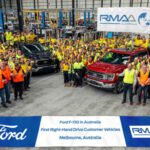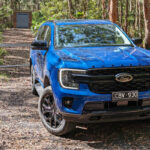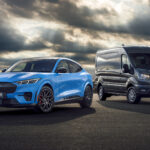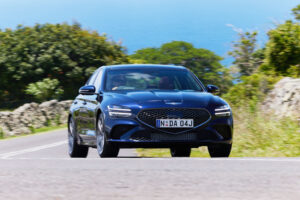
Ford Fiesta is a small car that’s quite enjoyable to drive because its on-road dynamics are aimed at Australian buyers of European cars. People who see them as more than mere transport.
The earlier Fiesta models were built in Germany but from 2010 they came from Thailand. In both cases they’re built to a high standard.
Australia’s first Fiesta was the actually the fifth generation and was tagged here as the WP Series when it arrived here in April 2004. That model was on the conservative side from a styling point of view. Later models, from with the WS Fiesta gen-six of January 2009 are bolder.
The Ford Fiesta was sold as a three-door or five-door hatchback and a four-door sedan, though not all were on offer in the new car market at all times. The four-door is pretty rare.
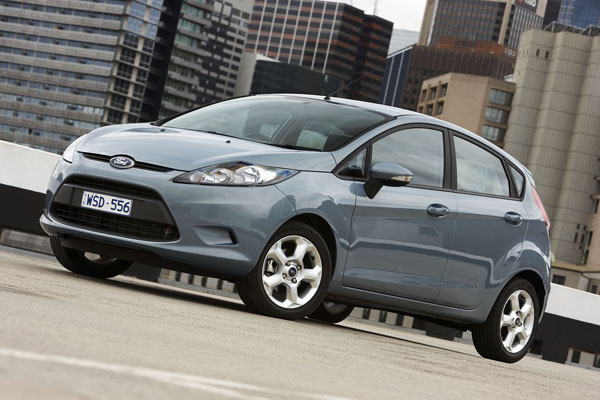
The front seats are larger than average for a car in this class and are reasonably comfortable, though some may find them on the firm side in the European manner. Large adults may find getting in and out of the rear of the three-door a hassle.
The Fiesta comes with an interesting variety of engines. Most use a 1.4- or 1.6-litre petrol engine and offer a couple of drivetrain options. The WZ Fiesta, introduced in August 2013, has a fascinating little three-cylinder 1.0-litre turbo-petrol that gives sparkling performance.
Even better is the 1.6 turbo-petrol in the Fiesta ST, it has strong torque over a wide spread of revs and many buy them as low-cost alternatives to full-on hot hatches.
Sold from November 2009, the Fiesta Econetic is a super-economy model powered by a 1.6-litre turbo-diesel engine tuned for minimise fuel consumption. Obviously it’s not exciting to drive but the technology is fascinating and drivers who like something that’s right out of the ordinary love them.
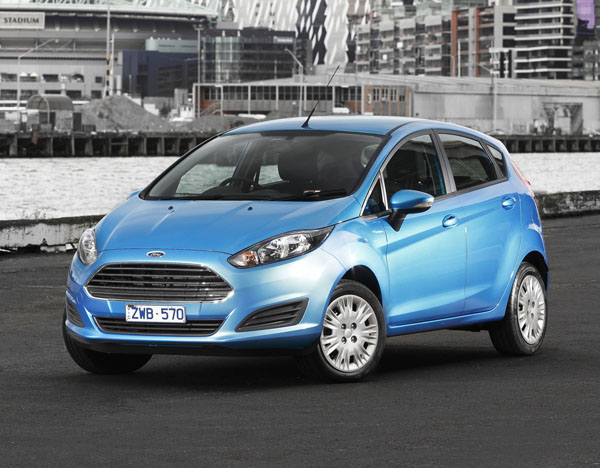
The Ford Fiesta XR4, introduced in June 2007, is a genuine hot hatch. Its Duratec 2.0-litre engine gives plenty of performance a car of this size. Inside, there are sporting seats with leather bolsters. It has lowered suspension and when new rode on Pirelli P-Zero tyres.
Some will be disappointed that only a five-speed gearbox is used, rather than a six – but that’s how cars tended to be back on those days.
The XR4 wasn’t a big success and imports ceased just 18 months later.
While a good home mechanic can do a fair bit of work on a Fiesta, they will find the underbonnet area is cramped. As always we strongly recommend leaving all safety related items to professionals.
Many mechanics running their own independent businesses will have had formal training while employed by Ford dealers in their earlier days in the business.
There are many hundreds of Ford dealers Australia wide. While some uncommon parts for Fiestas may not be held in country dealerships it usually only takes a couple of business days to have parts shipped out to them. We seldom hear any real complaints about prices of parts or servicing on Ford Fiestas.
Insurance premiums for the standard Ford Fiesta models are about average for its class. Some companies may charge more for the XR4 hot-hatch and the hot-ish Fiesta ST, though not outrageously so.
WHAT TO LOOK FOR
European cars aren’t always built to the very high standards of Japanese ones, so be sure to arrange for a full professional inspection.
Carefully check the interior for signs of damage due to poor assembly, also for damage done by rough or bored kids.
Listen for squeaks or rattles when driving on rough roads, not necessarily unsealed ones.
Listen and feel for a manual gearbox that hesitates or crunches during fast changes.
Try the steering on full lock at low speeds both all the way to the right and the left. Listen for the clicking sounds that indicate worn universal joints.
A Fiesta XR4 that has been driven hard can often be identified by uneven tyre wear. Also look for lowered suspension, big-diameter wheels with low profile tyres, and additional instruments.
Rust isn’t going to be a problem unless a car has been poorly repaired after a crash. Look for paint finish that doesn’t match from panel to panel and for overspray on non-painted areas.
HOW MUCH?
Expect to pay from $1500 to $4000 for any 2004-2008 Ford Fiesta; $3000 to $5500 for a 2009 Zetec; $4500 to $7500 for a 2013 LX; $6000 to $10,000 for a 2014 Trend; $7000 to $11,000 for a 2017 Ambiente; $8000 to $12,000 for a 2018 Trend; $10,000 to $15,000 for a 2015 ST Turbo; and $12,000 to $18,000 for a ST Turbo.
CAR BUYING TIP
Start your used car shopping at least a month before you plan to buy. That way you can follow what’s on sale and get an idea of prices being asked – and actually paid. RECALLS: To browse recalls on all vehicles go to the ACCC at: www.productsafety.gov.au/products/transport/cars/




